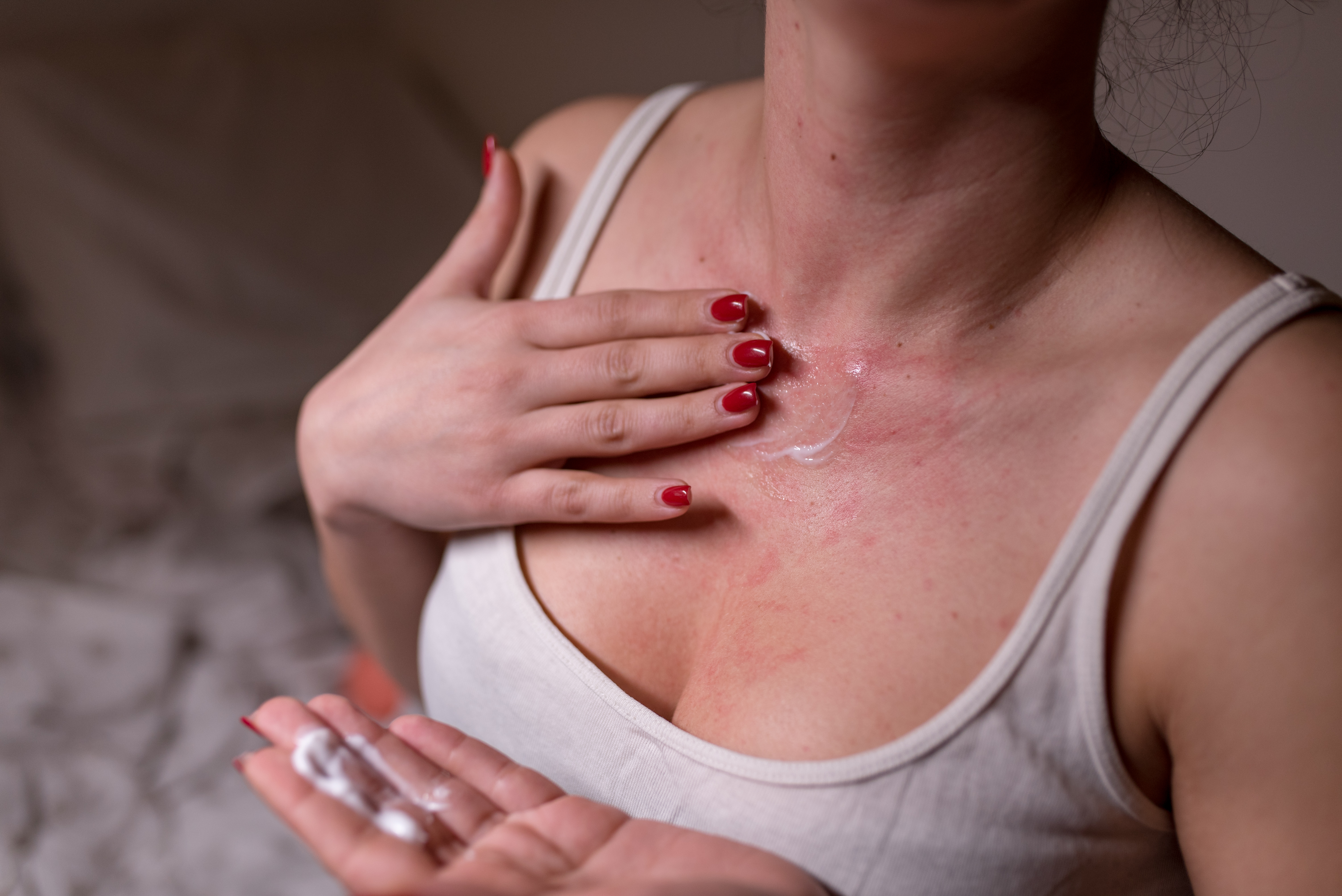As summer approaches and temperatures rise in certain parts of the world, heat rash becomes more common. You’re more likely to get it when it’s hot or humid, making your body sweat.
Heat rash, also known as miliaria or prickly heat, occurs when you sweat a lot.
Excessive sweating causes your sweat glands to become blocked, resulting in an itchy red rash a few days later.
If you notice clusters of tiny red spots on areas of your skin that feel prickly or itchy, you may have heat rash. These can appear on any part of your body.
Both adults and children can get heat rash, and though it can be annoying to deal with, there are things you can do to treat it safely and effectively.
Heat rash treatment
If you think you have heat rash, the best self-care treatment is to keep your skin as cool as possible by limiting activity and staying hydrated.
You should also avoid activities that make you sweat a lot, such as exercising or playing sports outdoors on a hot day.
Heat rash usually clears up on its own within a few days, but if it’s really uncomfortable to live with, there are things you can try yourself to speed up the relief.
Stay cool and hydrated
Taking cool showers frequently will help to calm your skin, especially if you overheat or you’ve just come in from being outside on a hot day.
Try to stay hydrated too, as this will help to regulate your body temperature. When the weather’s hot or humid and you’re losing more water through sweat, it becomes more important to ensure that you are hydrated.
If your mouth is dry, you feel thirsty or your pee appears more concentrated this could be a sign that you’re dehydrated and need to drink more fluids.
You could also use fans or air-conditioning if you have them to circulate the air or lower the room temperature.

Anti-itch remedies
Cold compress
If your skin is particularly itchy as a result of heat rash, try not to scratch as this may make the rash worse. Instead, apply a cold compress to the affected area to help soothe symptoms.
Calamine lotion
If a cold compress doesn’t have much effect, ask a pharmacist for recommendations.
They may give you calamine lotion, a topical medication, which can help cool and soothe the skin. This may help to relieve symptoms of itchiness or irritation, but can also dry the skin.
Antihistamine tablets
A pharmacist may also give you antihistamine tablets to help reduce itchiness or swelling when you have a skin rash.
These medications block the release of histamine. If too much histamine is produced, this can cause your skin to become red and inflamed.
Steroid cream
Another treatment a pharmacist may give you is a steroid cream called hydrocortisone.
These creams help to reduce inflammation and irritation, and can relieve itchiness while you wait for the rash to clear. Steroid cream isn’t suitable if you’re pregnant, so always check with a doctor first.
When to see a doctor for heat rash
Heat rash isn’t usually anything to worry about, but if these treatments don’t help to ease your symptoms - or your symptoms get worse despite staying out of the heat - see a doctor.
Generally, you should see a doctor if your symptoms last for longer than a few days, as other conditions can also cause a rash on the skin, making it important to know what the rash is.
You should also pay attention to any other symptoms you may have, like a high temperature (fever), as this could be a sign of an infection.


